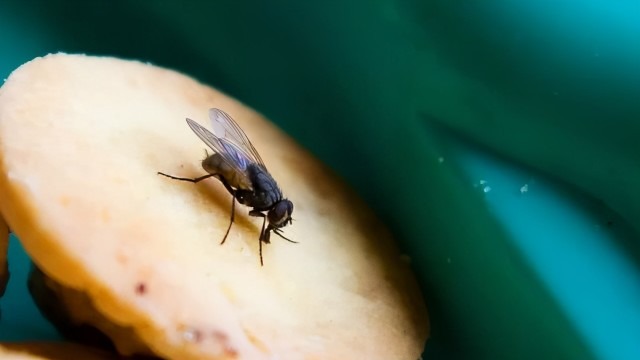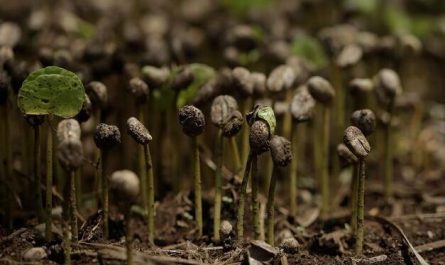Summer is approaching, and flies are also coming. Humans always hate flies. When flies eat, they must spit out the crop fluid to dissolve the food. The habit is to eat, vomit, and pull. Someone has observed that when food is abundant, flies have to defecate 4 to 5 times per minute. So if a fly stays on your fruit for a period of time, you’d better wash it, maybe there are flies on it.
Flies often appear in dirty places. The hair and digestive system on its surface are easily attached to a large number of pathogens. Flies can transmit 50 kinds of diseases. Among them, important diseases that have an impact on livestock and poultry are avian influenza, Newcastle disease, foot-and-mouth disease, and pigs. Plague, poultry pasteurosis, poultry colibacillosis, coccidiosis, etc., flies can accelerate the spread of epidemic diseases during disease outbreaks.
Therefore, the fly thinks this is a kind of creature with all kinds of harm but no benefit. What kind of effect does the fly have on the earth? What are the consequences if it is eliminated?
The role of flies in ecology
First of all, we need to know that flies, or flies, belong to the suborder Diptera, Diptera, in the taxonomy of insects. There are about 40,000 species of flies named by Diptera scholars in the world, and nearly 5,000 species are distributed in China.
Among the flies with such high species diversity, only a few species such as housefly of Muscidae, Lucilia sericata of Callipidae, summer lavatory fly of Flyidae and Sarcophagidae are related to our living environment. “Close connection”: They are all saprophytic species that feed on corrupt substances or animal excrement in the environment of towns and villages.
In fact, the feeding habits of flies are complex and diverse. In addition to the saprophytic nature of the heavy mouth, they also include herbivorous (such as leaf miners, etc.), honey feeding (such as hoverflies, etc.), and predatory (such as slippery flies, etc.) And other habits such as parasitic (such as flies, etc.), they play different roles in nature. It can be said that flies are an indispensable part of the energy and material cycle of the ecosystem.
But even saprophytic flies play an important role in nature. Nature produces a lot of garbage and animal carcasses every day. If these things are not broken down, it will have a very bad impact on the environment. For nature, scavengers such as flies are important cleaners.
In addition, we must understand that no creatures can survive alone. They are all dependent on each other in the food chain. Once the flies are extinct, it is likely to cause a negative chain reaction in the biological chain, which will have a more serious impact on human society. For example, the introduction of rabbits in Australia broke the ecological balance and squeezed the living space of native marsupials. Many marsupials are on the verge of extinction.
Flies can be used as food
Flies can be eaten as food. In foreign countries, it is no surprise that flies are used to make food. The North American Indians baked the flies into soft and delicious cakes, named “Kuchapi” cakes. In the “Insect Restaurant” in Paris, France, you can eat “fried flies”, “steamed maggots” and other fly foods. In Mexico, home of insects, fly eggs can be cooked into “caviar” and other delicious fly foods. The reason why people use flies as food is because of the nutrients contained in the flies. Flies larvae are rich in protein, vitamins and various trace elements necessary for the human body.
It can be used as feed and feed additives. Experiments have shown that many animals fed with fly maggots have a weight gain effect that exceeds the famous Peruvian fish meal. Under the same conditions, the weight of grass carp increased by 20.08%; the lean meat rate of pigs increased by 9%, and the weight increased by 7.48%. If 10g fresh maggots are added to each chicken, the weight gain rate of the chicken will increase by 7.93%, and the egg laying rate will increase by 10.1% if the egg is laid one month earlier. Scientists also confirmed that feeding shrimp, crab, fish and soft-shelled turtle with fly maggots has obvious disease resistance. Using fly larvae as feed additives can significantly reduce feed costs and feed consumption. And can improve the quality of feed.
Flies have scientific value
At the beginning of the 20th century, people used sterilized live fly maggots to treat purulent infections, because fly maggots can reduce bacterial communities and remove necrotic tissue, thereby stimulating wound healing. In recent years, due to the abuse of antibiotics, bacteria have developed drug resistance in a relatively short period of time and have gradually increased. People have begun to use fly larva therapy to treat various refractory infections, and have received quite satisfactory results.
In addition, chitin is the main component that constitutes the body of the fly. The average annual production of insect chitin on the earth is 10 to 1 ton, which can match cellulose. Plant cellulose has been widely used in our normal life. But the huge resource of insect chitin has not been used yet.
Scientists are currently working on research on the utilization of chitin. For example, after adding a processed chitin compound to shampoo, it can make hair smooth and shiny. Chitin can also be used as an adsorbent to treat sewage. Its capacity is no less than that of synthetic polymer adsorbent materials. It is an important material for the future environmental protection industry. Chitin is also a promising medical material, which can be used to make surgical sutures and artificial skin.
Bionics has been developed in the past four to fifty years and belongs to the marginal discipline between life sciences and technical sciences. In recent years, the following bionic studies have been conducted on the structure and function of flies, such as the functions of flies antennae and balance bars; based on the precise navigation mechanism of housefly compound eyes, a visual navigation device for moving robots has been developed; and fly-sized insects have been developed The robot uses minimal invasive surgery technology to perform operations in human body cavities.
to sum up
Therefore, although flies do have many annoying places, they also have their own value. Whether it is for nature or human society, flies have irreplaceable effects.






